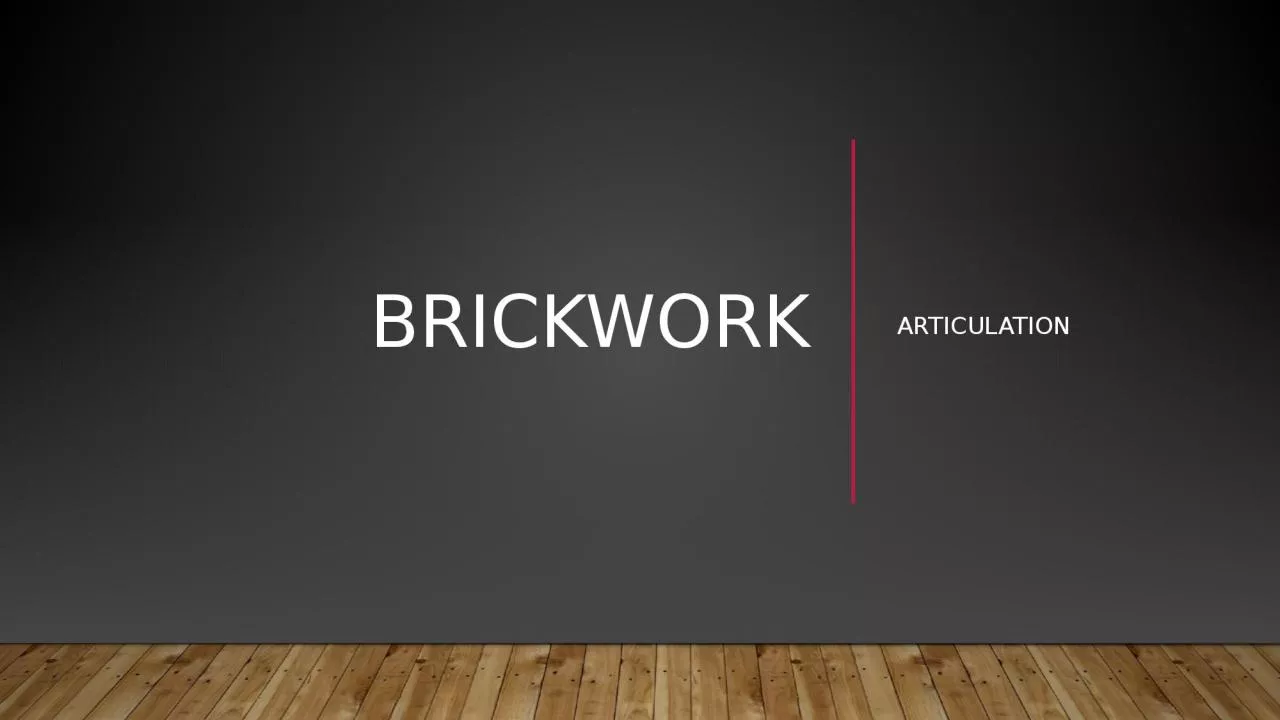

Brick construction is very brittle and susceptible to cracking due to movement Movement occurs for many different reasons including variations in climate or temperature movement in the frame and movement in the foundations Articulation joints accommodate these movements in a building ID: 1037803
Download Presentation The PPT/PDF document "Brickwork Articulation Articulated walls" is the property of its rightful owner. Permission is granted to download and print the materials on this web site for personal, non-commercial use only, and to display it on your personal computer provided you do not modify the materials and that you retain all copyright notices contained in the materials. By downloading content from our website, you accept the terms of this agreement.
1. BrickworkArticulation
2. Articulated wallsBrick construction is very brittle and susceptible to cracking due to movement. Movement occurs for many different reasons, including variations in climate or temperature, movement in the frame and movement in the foundations. Articulation joints accommodate these movements in a building.Vertical articulation must be installed in all un-reinforced masonry walls unless the soil has been classed as A or S.Articulation joints are tied at specific intervals and sealed with filler. In straight walls that do not have openings, the articulation joints must be at no more than six metre centres. They must not be closer than the height of the wall away from the corners.
3. Why do I need jointsFootings can be designed to either resist or accommodate movements in the foundation soil. When buildings are constructed on soils that swell and shrink the most sensible approach is to design the footing and structure to accommodate the anticipated foundation movement.Temperature and humidity also cause the brickwork to expand and contractThe reason for vertical articulation is to minimise cracking of masonry units and to minimise window and door jamming.
4. Location of jointsFrom AS4773.1 Masonry in small buildings codeNormal width of joint is 10mm for single storey. 15mm for walls greater than 8.5mMost articulation joints can be combined with window openings. The continuous vertical articulation joint, running from the footing to the roof, can be provided on the line of the window jamb.Joint’s do not need to run through the DPC (Damp Proof Course) provided there is not more than 600mm of masonry below.
5. examples
6. For walls in straight continuous masonry with no openings or changes, see table. If the walls have openings larger than 900x900 then no more than 5m spacingIf the opening is >1800 consider putting a joint at both side of the windowNote for class E sites, structural design of footings is required.How often do I need joints
7. More examples
8. Keeping structural stability of the wallKeep in mind that at articulation joints, especially in regard to single skin or full masonry construction (i.e. not brick veneer). Stability needs to be maintained around the joint. This is done by using masonry expansion ties (MET).
9. Other things to considerJoints must be consistent through finishes, e.g. render. Render also need to be jointed over the DPCTo limit cracking from footing movement, suitable precautions include: Adequate drainage for the removal of water from the foundations Ensuring that large trees are not placed adjacent to the footingsCorrectly sized footingsInclusion of reinforcement in the wall.
10. More infoCMAA guide to Articulated walling (http://59.167.233.142/publications/pdf/TN61ArticulatedWalling.pdf)CMAA guide on unreinforced and reinforced walls (https://www.nationalmasonry.com.au/wp-content/uploads/CMAA-Movement.pdf)Master builders fact sheet on articulated walls (http://keystonetraining.com.au/wp-content/uploads/2011/06/tech-01-articulated-walling-fact-sheet.pdf)AS2870, AS3700, AS4773